Mile-high mixes, Kanye and NES: Jesse Ray Ernster on mixing Burna Boy’s African Giant
LA-based engineer Jesse Ray Ernster tells us how he mixed Africa’s biggest artist across two studios, a plane and a taxi, and how he earned a Grammy nomination doing it.
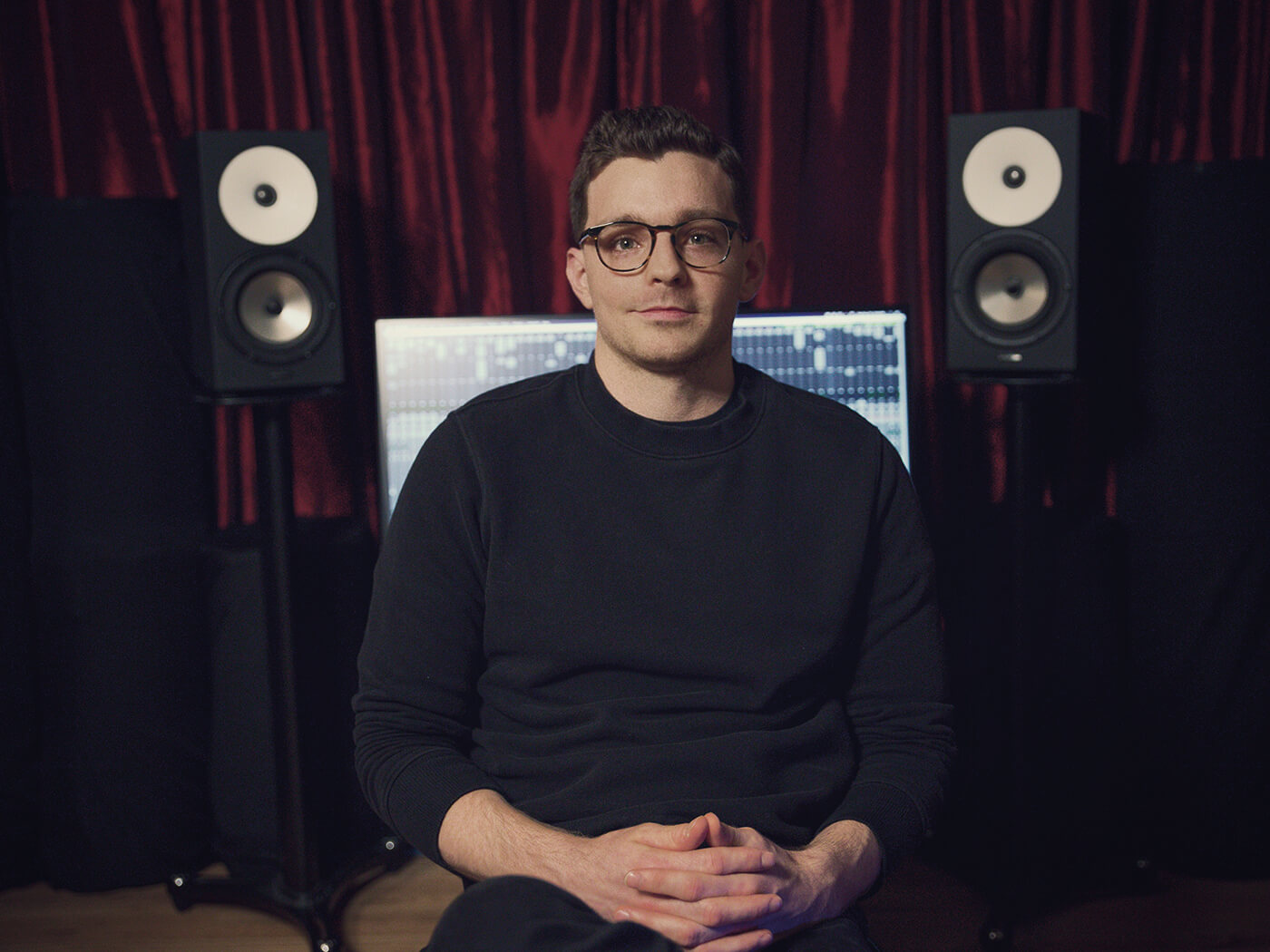
All images: John Lopez
It’s no understatement to call Burna Boy the most prominent artist in Africa. And, already amassing a huge audience in the UK and Stateside with 2018’s Outside, the critical acclaim and awards that followed 2019’s African Giant have cemented him in the global consciousness. Behind the faders on that record was Jesse Ray Ernster, an LA transplant from Winnipeg with mixing in his blood. Though his father is also a mix engineer, Jesse Ray’s big break came from a chance encounter with Kanye West. This relationship led to Ernster recording tracks on Jesus Is King, where he met Nigerian singer and songwriter Burna Boy.
African Giant was produced in Nigeria, London, New York and LA, with fifth single Gum Body masterfully produced by Benjamin Zill, aka Benjamz. “Benjamz’s original reference mix sounded great, and Burna wanted to retain that vibe. “He is prolific with 20/20 vision on how he wants to present the song, sonically. So I generally won’t stray too far from the reference/rough mix. When I receive a Burna song to mix, I just try to play off the strengths of the track, pinpoint the winning aspects of the song, and then squeeze as much essence out of those elements as I possibly can!” Jesse reveals.
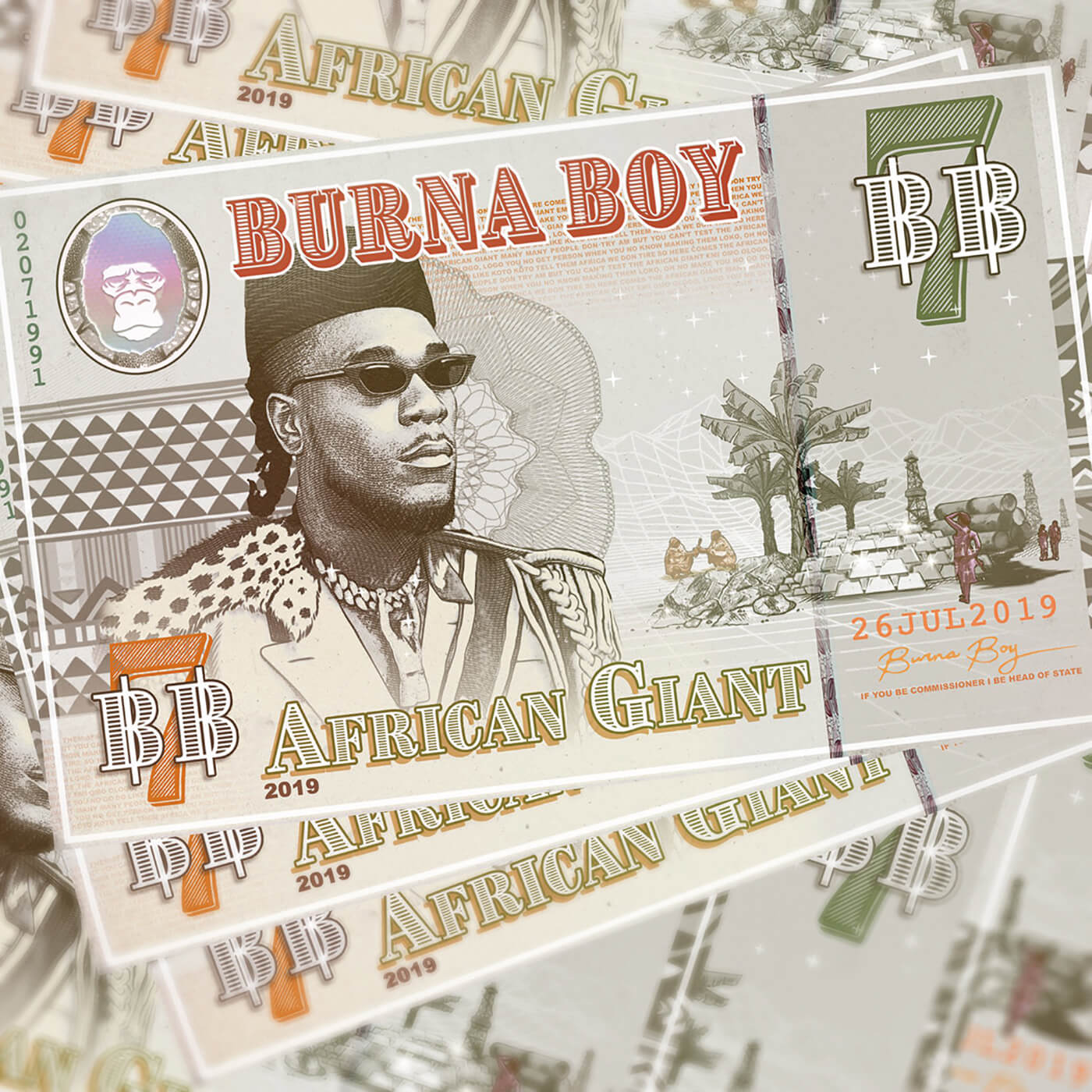
Time to bounce
Although Ernster had been mixing all the songs on African Giant from his studio in Los Angeles, a week from the album deadline, Jesse and his manager received a call from Burna saying he wanted to finish the mixes in the same room. They were heading to London’s Metropolis Studios. “This was exciting news,” says Ernster. However, the Pro Tools sessions were tied up with a complicated routing scheme of analogue gear and obscure plug-ins.
“I was challenged with the task of printing all of the sessions down in a format that would play back accurately at a different studio.” This involved bouncing stem through his master bus chain, while triggering the sidechain on his SSL Bus Compressor with the full stereo mix. This, he says, gave all tracks a similar amount of “glue and compression”. It took him five days to print the 19 songs on the album, but it paid off. When he got to Metropolis Studios in London, for the attended sessions there were only small tweaks left to make.
Feature swap
Though the song initially didn’t have a feature, that changed in London, when Blue Lights singer Jorja Smith agreed on a feature swap, with Burna recording a verse on her single, Be Honest, and her recording a verse on Gum Body. At the end of the week, all the tracks were sent to mastering, except for Gum Body, for which they hadn’t yet received Jorja’s vocal. So, with everything else wrapped, Ernster boarded his flight to LA.
“A few hours into the plane ride, I received the vocal files from Jorja’s engineer, so I rushed to get her vocal placed into the song and mixed at 36,000 feet above the Atlantic. I sent the mix out for approval,” Ernster recalls. “By the time we landed, I had Gum Body mix notes back: “Mute the ad-libs in certain spots, move the fadeout, add more saturation and width to Jorja’s vocal.” I made the mix changes on my laptop during the lengthy cab ride home on the 405 freeway, and we had an approved mix 40 minutes later by the time I hit my driveway!”
Under the hood
AUTOMATION: Jesse Ray Ernster’s “wild, yet not so wild” approach to Pro Tools automation was vital.
“I love to automate the volume, panning, sends, and plug-in parameters throughout a mix to give the song an extra level of spice and flexibility. In many cases, it can be a way to move elements around and make things exciting,” explains Ernster. But for Gum Body, most automation was to control dynamics. He deliberately avoided compressors, to preserve the energy, colour, and the wet/dry relationship between sources and send effects that had already been printed.
While the reference mix balance was working, some parts needed to be a little more audible. “This was one of those surprising mixing scenarios in which drastic, seemingly bombastic automation actually reduced movement in the song,” he says.
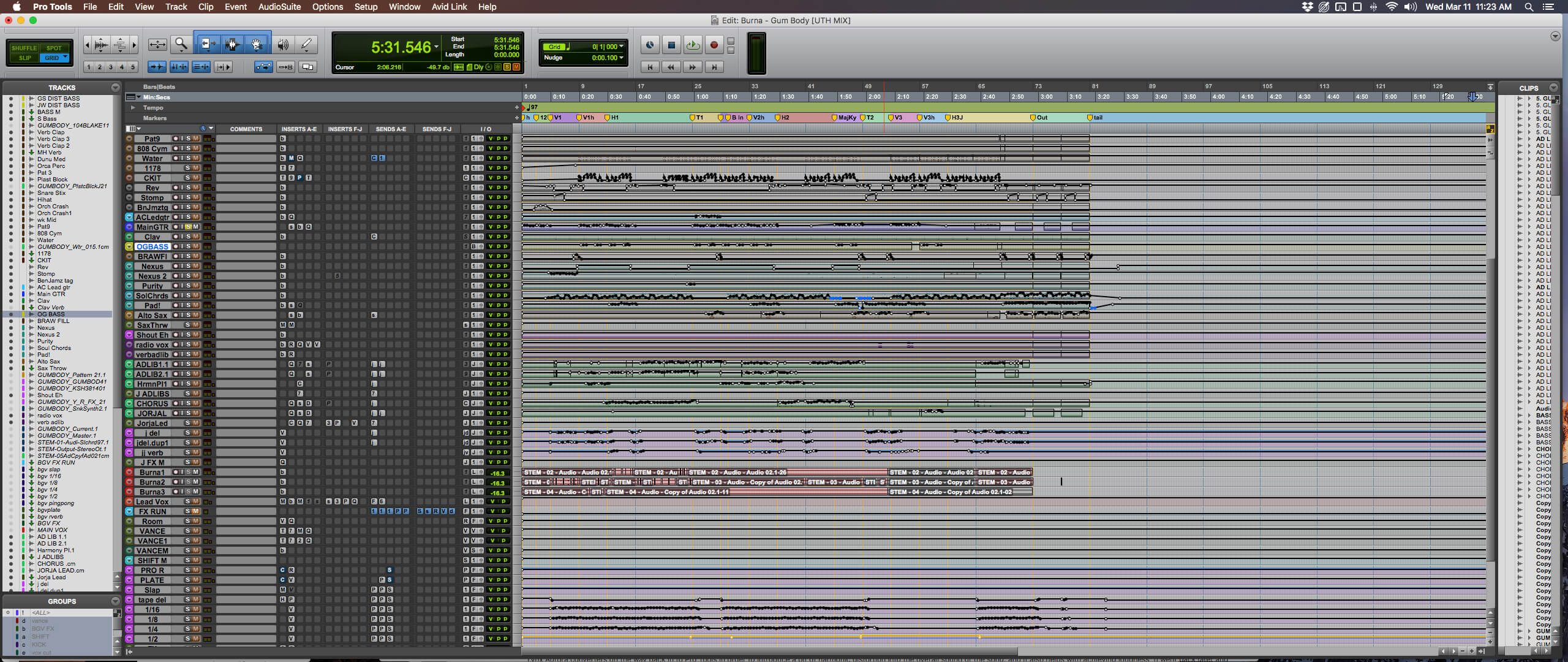
For these types of automation moves, the engineer opts for Pro Tools’ Write automation mode. “I’ll pull the parameters around until it feels cool! It generally takes a few rounds of auditioning and rehearsing the moves; then I’ll write the final automation, and sometimes even go in with the pencil and line tools to fine-tune the section. It goes pretty quickly because I usually just write automation for a few bars and then copy/paste the moves through the rest of the song.”
CONSOLE EMULATION: “When I mixed African Giant, I was very into Brainworx bx_console SSL 4000 E because of its fantastic EQ and its TMT console emulation technology,” says Ernster.
“I started the mix by putting this plug-in on every channel and turning up the THD ALL parameter, bringing every channel into distortion, until I felt like it was lighting up the mix and adding some mojo. It’s a fantastic way to take a song that already sounds great, and just give it some analogue flavour and excitement.”
Drums and bass
DRUMS: “The balance and feel of the drums were great on the original reference mix, but the kick drum had a few challenges. One issue was that it didn’t contain any sonic information above 70hz, making it subby, loose and bit uncontrolled.” To combat this, he deployed the Metric Halo Multiband Dynamics. “I had a slow attack time to allow for a quick snippet of the transient to poke through, giving the listener an instance of punch before ducking the signal down. Then, a slower release time kept the unwanted sub-area tucked down long enough to stay out of the way of the 808s,” he explains. “I often do this to create fast low end, and my attack and release times always vary depending on the tempo.”
To make the subby kick audible on more playback systems, Ernster avoided sample-layering, instead opting for two outboard favourites to add higher frequency information: the Overstayer 8755D Modular Channel and his vintage Urei 1178.
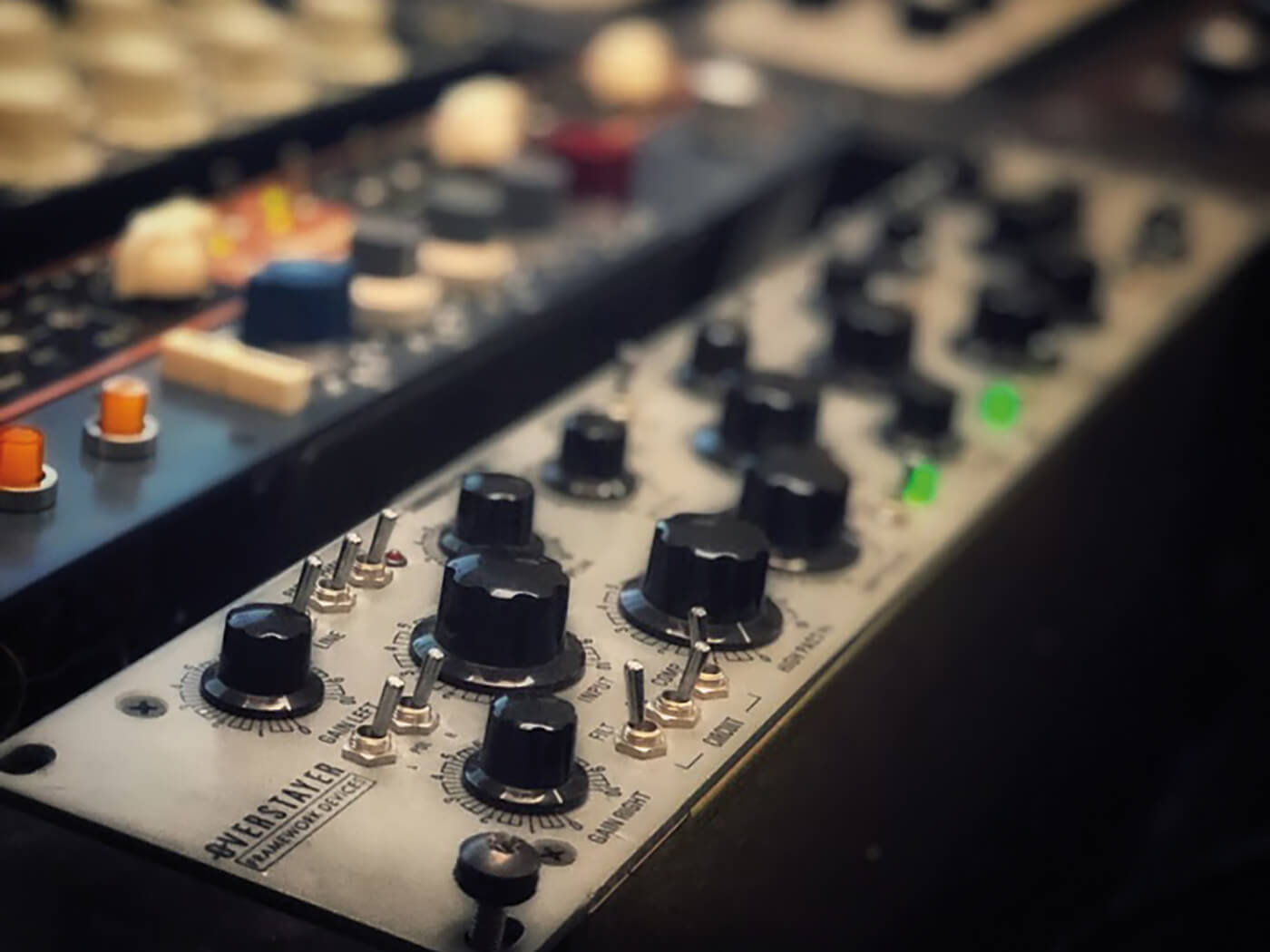
“The Overstayer is essentially a console in a box with infinite routing options for its EQ, saturation, and compression modules. This box is incredible and reminds me of driving an old SSL G-series desk. Running drums through this box immediately results in that sexy, overdriven Dr. Dre drum sound! I also added a Crane Song Phoenix tape emulation plug-in to enhance the drive and exaggerate the decay time.” Ernster isn’t afraid to get into the details. To find the perfect balance between the transient response and the decay sound he wanted, he automated Phoenix’s mix parameter throughout the kick hit. Beginning at 52% pre-transient to preserve the attack, he then immediately increased it to 100% for a better decay. He then pasted this automation to every other kick.
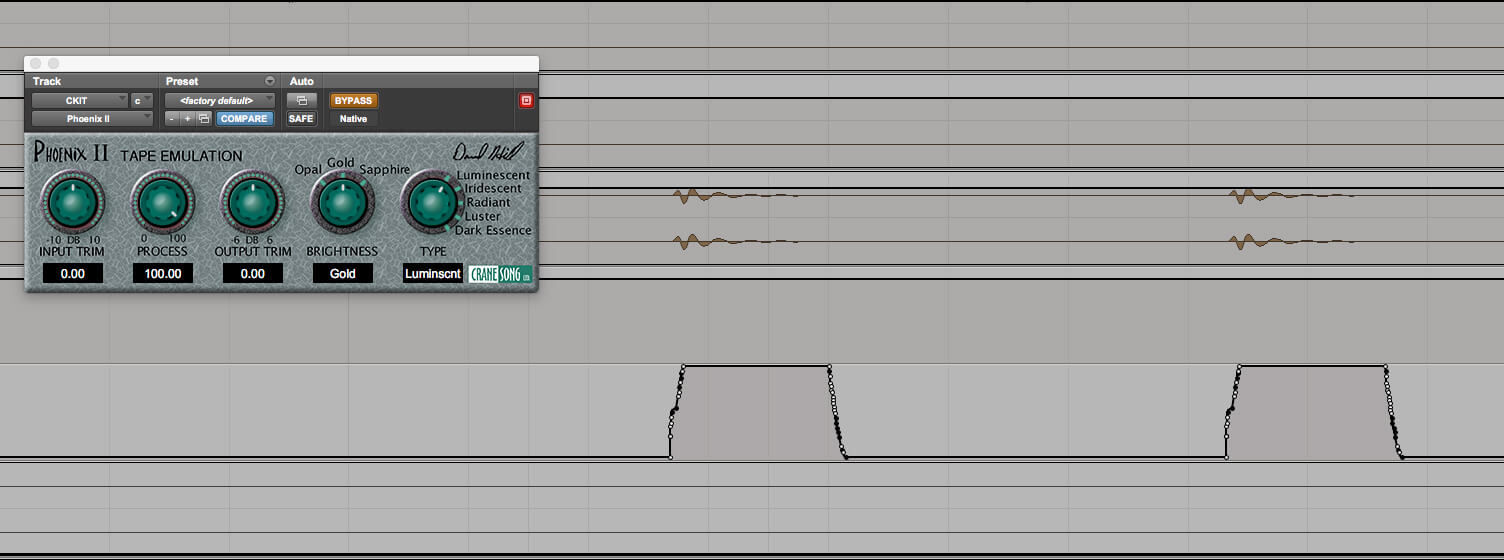
On a separate parallel channel, he ran the kick through the 1178 hardware with a slow attack and medium release. “The combination of the medium/slow release time and the 1178’s natural low-frequency roll-off had a lot to do with the choked sound of the kick on this song,” says the gear-obsessed engineer.
BUS COMPRESSION: “Next, I set up my stereo bus and dialled in my SSL X-Rack Bus Compressor to push the groove. On this song, I drove the output of the SSL (10ms attack, 0.1ms release, 3:1 ratio) to clip my Lynx Aurora converters on the way back into Pro Tools to introduce some overall harmonic distortion,” says Ernster.
A sidenote on loudness
Clipping his converters also helped him with loudness, though he went back later to dial the clipping down once the vocals were in place.
“Loudness is a hot topic these days because of the ever-changing landscape of streaming and delivery standards for mixing and mastering engineers. I love the sound of a recording that isn’t pushed to the ceiling; I’m a fan of hearing headroom and space! However, I’m usually competing with a very loud, limited reference mix, and the artist and producer are almost-always going to compare my mix to the original demo mix. If they turn on the original reference mix and it sounds louder than mine, the listener perceives it as brighter, bigger, and better. So, why fight them? Join them! I struggled for a long time to perfect the art of achieving loudness without the song crumbling. I implement several stages of compression, limiting, and clipping, and harmonic excitement within my mix bus chain and each stage contributes anywhere from .05-2db of gain.”
RISERS/FX: Ernster has a trick for risers, and you can hear it in the reverse swell riser that leads into verse 1 (0:08). “It rose up and then I immediately removed it, even though it had a tail that hangs over into the next bar,” he says. “It leaves room for the reverberated clap sound, and Burna’s vocal entrance. I figured that nobody would notice that it went away, because other elements in the mix occupy the listener’s attention.” This logic comes from fellow engineer Andrew Wade correlating Super Mario Brothers to fader automation.
Ernster: “The NES from 1985 had a sound engine that could only reproduce two channels of square-wave audio at a time. This meant certain tracks in the game music would momentarily cut out for gameplay sounds to be played, then be immediately brought back in. For example, when Mario retrieves a coin, the music is interrupted, and the coin sound plays. Nobody notices, and it keeps things clean!”

BASS & 808: “Once I had the drums and risers/fx feeling great, I introduced the bass and 808s. I used three parallel buses for the 808s on Gum Body: two processed channels running through my modded Distressors, and the dry 808. These Distressors enhance the low-end and punch better than anything else I have tried. Many compressors are unable to handle massive modern sub-low frequencies without making the sound smaller and further away, as opposed to big and up-front!”
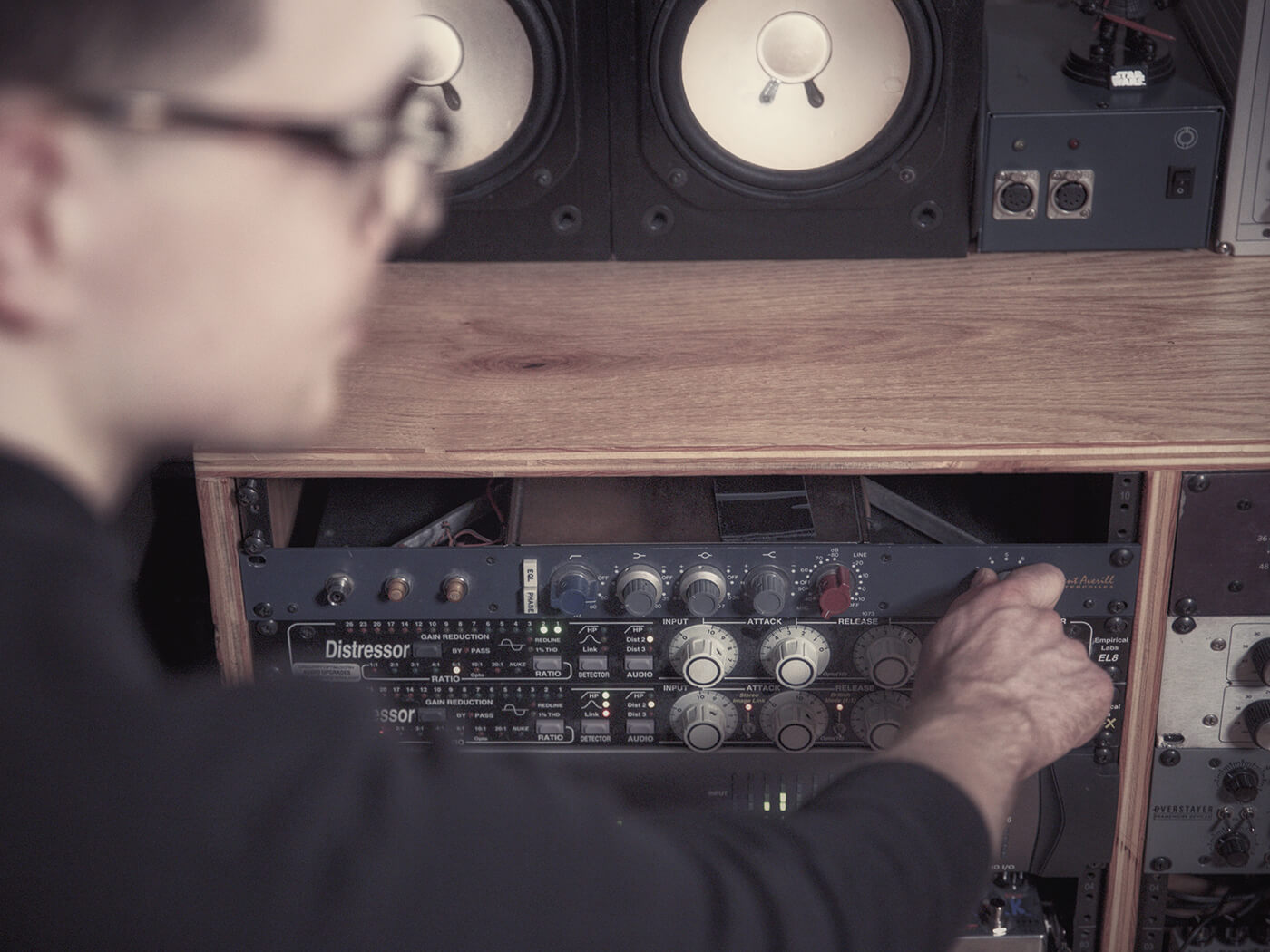
Jesse Ray Ernster’s Distressors are both modified (by Greg Scott of Kush Audio and Jim Williams of Audio Upgrades), but in similar ways: to broaden the range of response. The mixer’s Distressors have different tonalities, so he plays to their strengths and assigns each one to specific tasks. “My UBK [Kush Auidio] Distressor has a big, fat, gooey roundness and a detailed distortion, while the JW Distressor has a very fast, punchy transient response. I blend both in around the dry bass signal to get a bit more punch and saturation out of the part.”
These three channels are sent to a separate bus called ‘S Bass’ which is high-passed up to 1khz followed by a stereo chorus to widen the top-end. Then Ernster turned to automation to enhance the part’s feel. “Beat 3 is integral for the perception of the groove in this style of music. The snare part would traditionally fill that role, but in this song, the snares are all on the upbeats, so I had to rely on the bass to smash down on the backbeat with an accented hit.” By increasing the bass volume on beat 3 of each bar, he was able to add a bit more bounce to the backbeat.
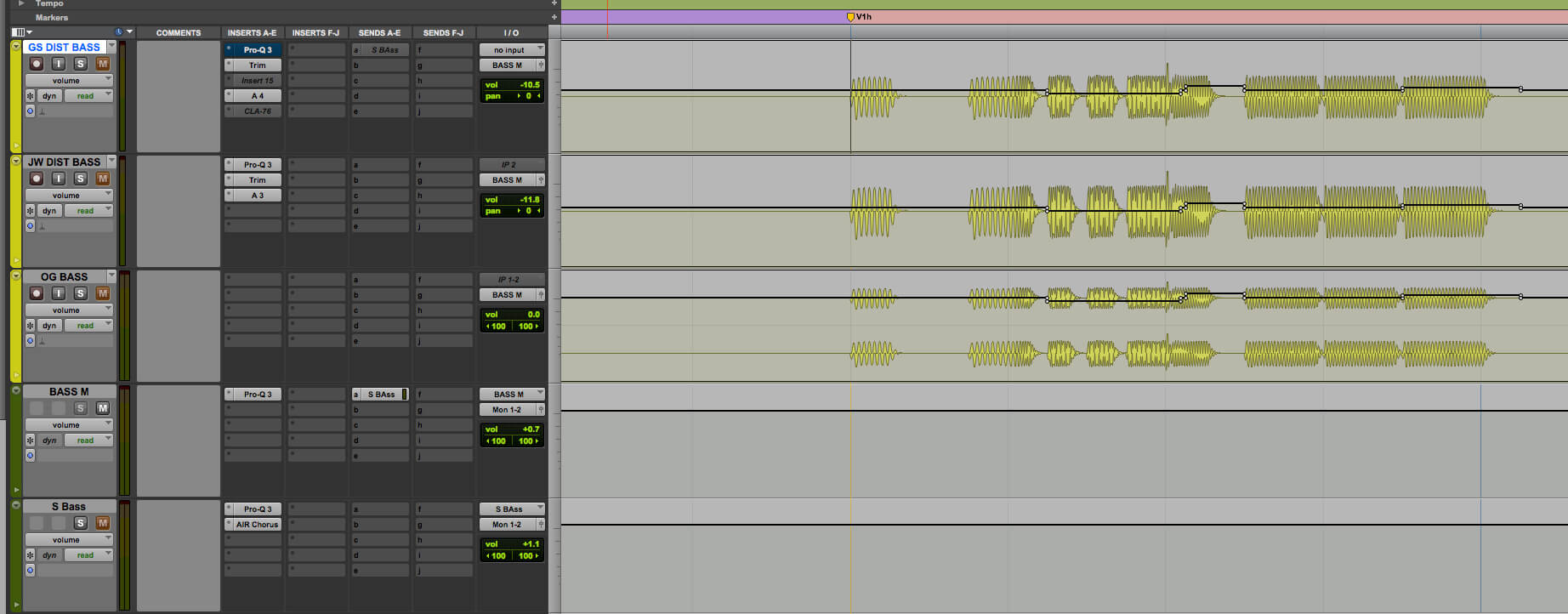
Vocals
BURNA’S VOCAL: “A big part of the job of a mixer is knowing when not to change things,” insists Ernster, “Burna’s vocal usually doesn’t require much work, and this song was no exception! His vocal stem arrived with all processing and effects printed into the track, and it sounded identical to the approved reference mix that he had grown accustomed to hearing, so my job was to enhance subtly, without changing the vibe too much!”
The first plug-in on the vocal chain was the Metric Halo Transient Control, with the sustain knob turned down to tame some of the effects and cut down room reverberation that had bled into the microphone, for a closer, more up-front vocal. Next, Ernster deployed the trusty bx_SSL E channel plug-in to boost 4.3khz and 13.5khz to help emphasize some of the consonants of Burna’s vocal, for better intelligibility.
“A big part of the job of a mixer is knowing when not to change things”
Not one to believe in magic frequencies, Ernster’s technique is to “sweep around until the sound feels better to my ears.” Liking where the vocal was sitting against the track, but with certain phrases poking out unevenly, Ernster reached for a compressor. But his favourites – Rev E 1176, CLA-76 – all altered the ratio between vocals and effects too much, making the voice sound washed out. “I ended up rolling with a combo of clip-gain automation and some subtle compression on the Metric Halo Channel Strip. That glued the vocal into place without changing the character that we all loved from the reference mix.”
“After that, I used an instance of Soothe to tame a few whistley resonances that were poking through and causing harshness at 2.9khz and 5.3khz. The final step in the vocal processing sees the Acustica Amber3 (which emulates the Avalon AD2055) boosted at 25khz for some “silky air”. “I usually reach for the Crane Song Phoenix as a final touch to pull a bit of grit forward, and in this scenario, I used the Luster/Sapphire setting with a 68% mix. Finally, I used a FabFilter ProQ3 to cut 0.73dB at 490hz to dial back a resonance.”
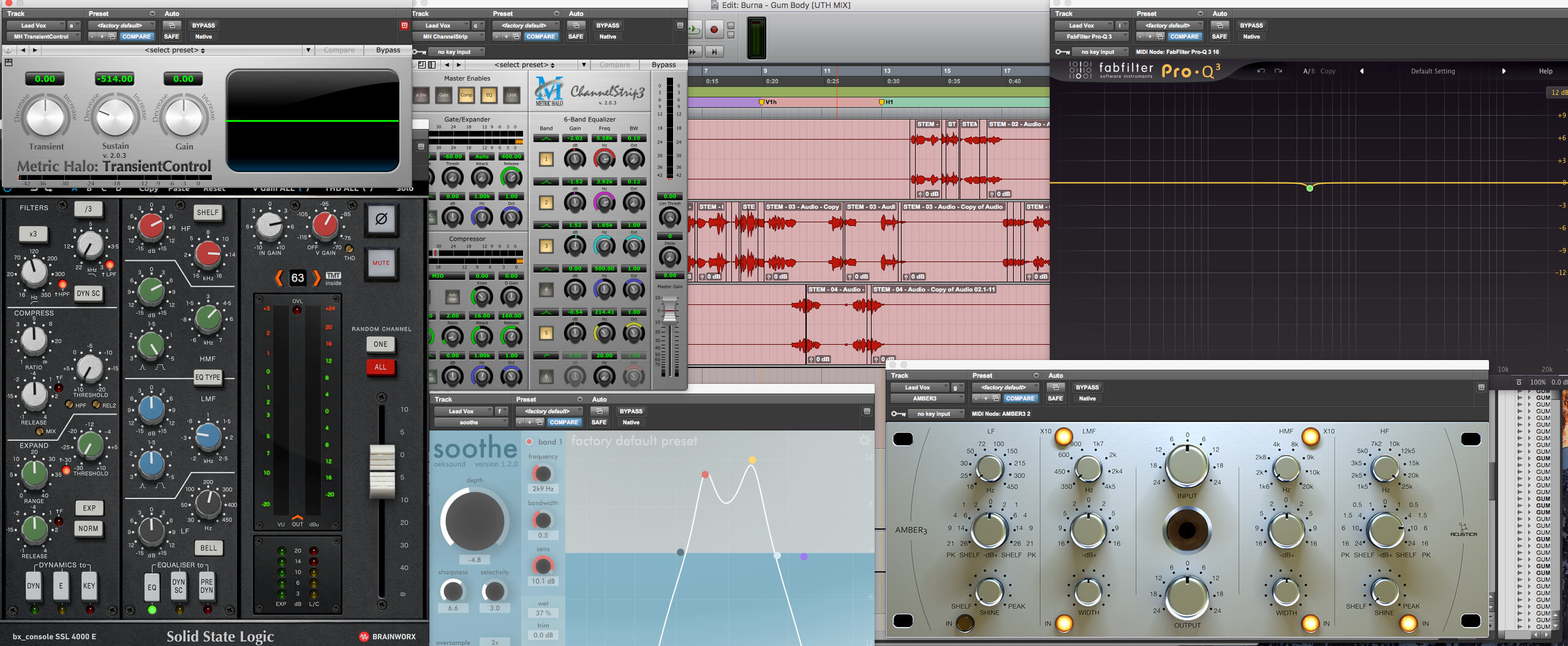
VOCAL FX & DEPTH: “Lately, I’ve been focusing on depth within my mixes,” says Ernster. “It’s crucial to me that the singer is glued into a similar sonic environment as the rest of the arrangement.”
“I sent Burna’s vocal to a series of effects busses that I used to fuse the vocal into the metaphorical space of the song. On this song, I used a few different simple Waves H-Delay tracks set at 1/2, 1/4, 1/8th, 1/16th note, and a quick slap setting. All of these fed into reverb tracks with Revibe II, Valhalla VintageVerb (Dirty Plate), and Lexicon Medium Hall. I adjusted the blend of these multiple effects auxes until the blend felt glued, but also still similar enough to the reference mix – just better and deeper.”
JORJA’S VOCAL: “Jorja’s vocals had a wonderful warm quality to them, so it was my job to retain that character while boosting clarity against the instrumental mix.”
First up in the vocal chain was the EQ module from Waves CLA MixHub, high-passing at 94hz to eliminate ground hum, traffic rumble, control-room bleed, and any knocks from into the microphone stand. “I only high-pass the sub information. I don’t allow the filter to reach any of the fundamental warmth frequencies in the low-midrange of the singer’s voice.”
For clarity and intelligibility of consonants, he also boosted some 4.1khz and 7.8khz. Then, also in CLA MixHub, used the “Bluey” 1176 mode, compressing gently at a 2:1 ratio. Next up was Waves CLA-76 with a slow attack and fast release to do some levelling of the signal.
“At that point, I was okay with the feel of the vocal texture, but it lacked evenness from phrase-to-phrase,” he says. And, when he pushed the compressor harder to level out the signal, it sounded worse. Ernster’s solution was fader automation on the source audio tracks before hitting the vocal bus compressor, giving the compressor less to do.
As with Burna’s vocal, Ernster brought out Acustica Amber3 to boost 25kHz, followed by Crane Song Phoenix (in Opal Dark Essence mode, this time). “The EQ boost drove the tape into a state of saturation in the extended top-end and contoured a smooth roll-off of those hard high frequencies. The 25khz boost would have sounded a bit too intense on its own, but the Phoenix provides the perfect compensation by gently rolling off the top end (with a gradual low-pass filter), providing the vocal with a silky, ‘classic’ top end that sounds present, but feels a bit dark, too.”
“After the first mix went out, they asked for more width on her vocal, so I slapped on the Valhalla Space Modulator with a slow rate, a tad bit of depth, and an 18% mix; this pushed a parallel signal of the vocal off to the sides of the mix for a bit of three-dimensional surreality.After copying Jorja’s lead processing to her harmonies and ad-libs, some work was required to get them to sit behind Burna’s voice including panning, effects levels, and some automation.
Conversely, her effects busses were very straight-forward: an 1/8th delay and a 1/4 delay feeding a Valhalla VintageVerb (Plate 1.85s); “all dialled in subtly to fit the ambience of the track. And I did two loud-and-obvious fader throws to the 1/8th delay send on the words “Care to have your own HEART (2:20), If you treat me kind and kept me close, We’ll always still PART”.
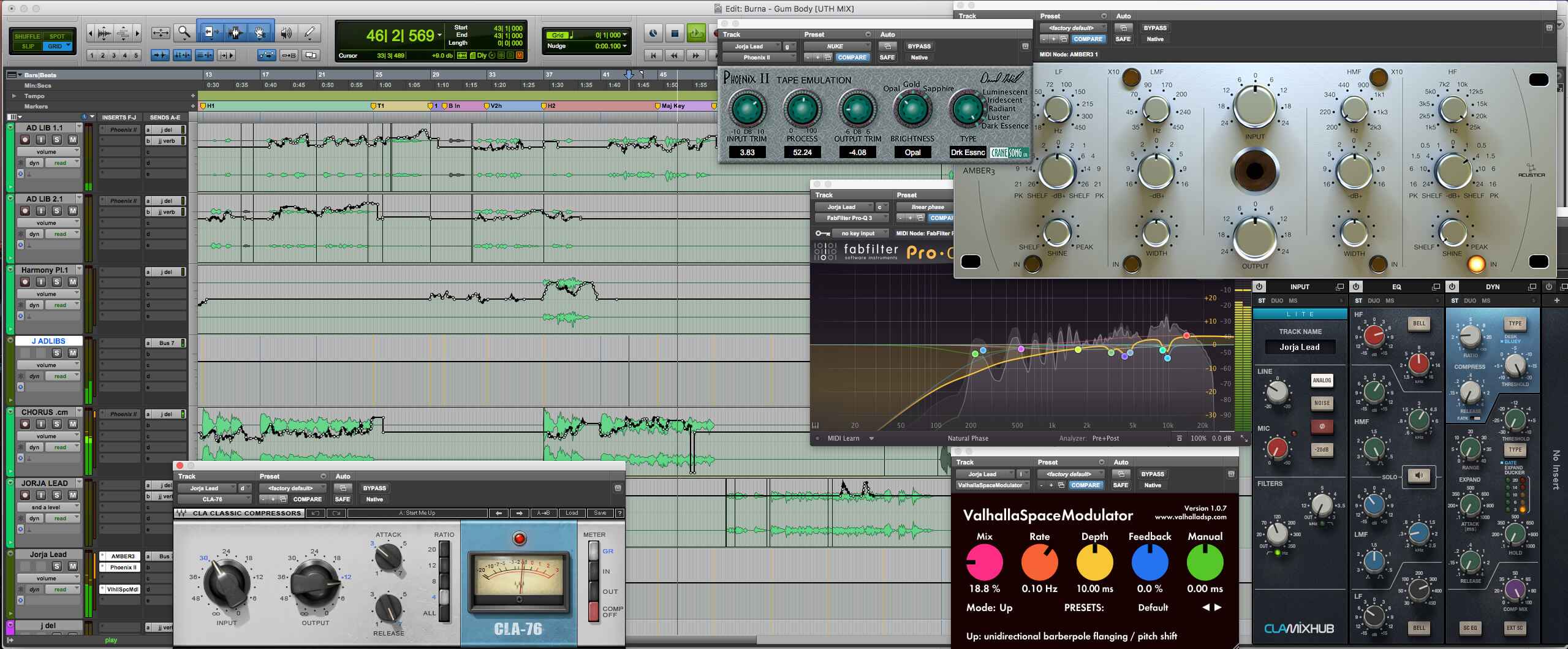
Mid-range/melodic elements
SAXOPHONE: “The saxophone sample level was all over the place! I cut a bit of 3khz – which is a standard move for me when mixing a saxophone – and added a bit of 11.2khz. I had to ride the volume fader carefully to tame some loud sections, and make sure the decay didn’t disappear into the mix; I wanted to hear those subtleties!
Again, the instrument reverb was printed with the stem, meaning compression changed the relationship between wet and dry signals. Instead, Ernster automated the volume and a send called ‘Sax Throw’ with a Metric Halo DirtyDelay feeding a HaloVerb to extend the tails of the sustained notes.
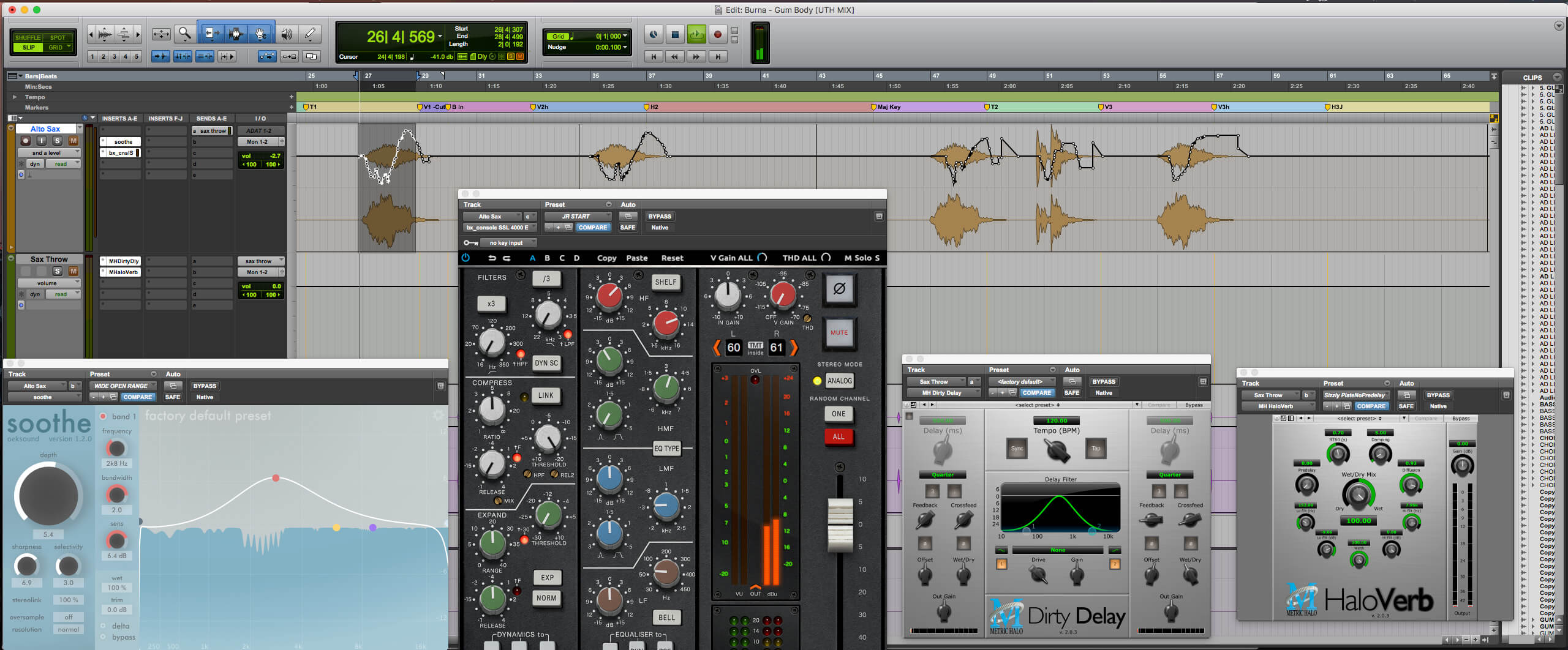
ELECTRIC GUITAR: “The rhythm guitar part was very dark and muddy,” says Ernster, “Right away, I reached for OekSound Soothe to tame unwanted low-mid resonances.”
“Anyone who has used Soothe knows how seductive it can be to turn it all the way up to rid a signal of any harshness and overtones completely, but this almost always results in an unnatural, phasey, distorted mess, so I always come back later to dial it back once my ears have rested, and my perspective is renewed. ”
“Generally, I use Soothe to tame upper-mid harshness, but it was perfect in this scenario for babysitting some of those lower frequencies, too,” he explains. After Soothe, he used an SSL EQ to boost 9dB at 5.8khz to cut through and to cut another few dB at 300hz, while surgically cutting 2.67db at 2.8khz with Fabfilter Pro-Q 3. Finally, a spot of volume automation was applied for subtle movement.
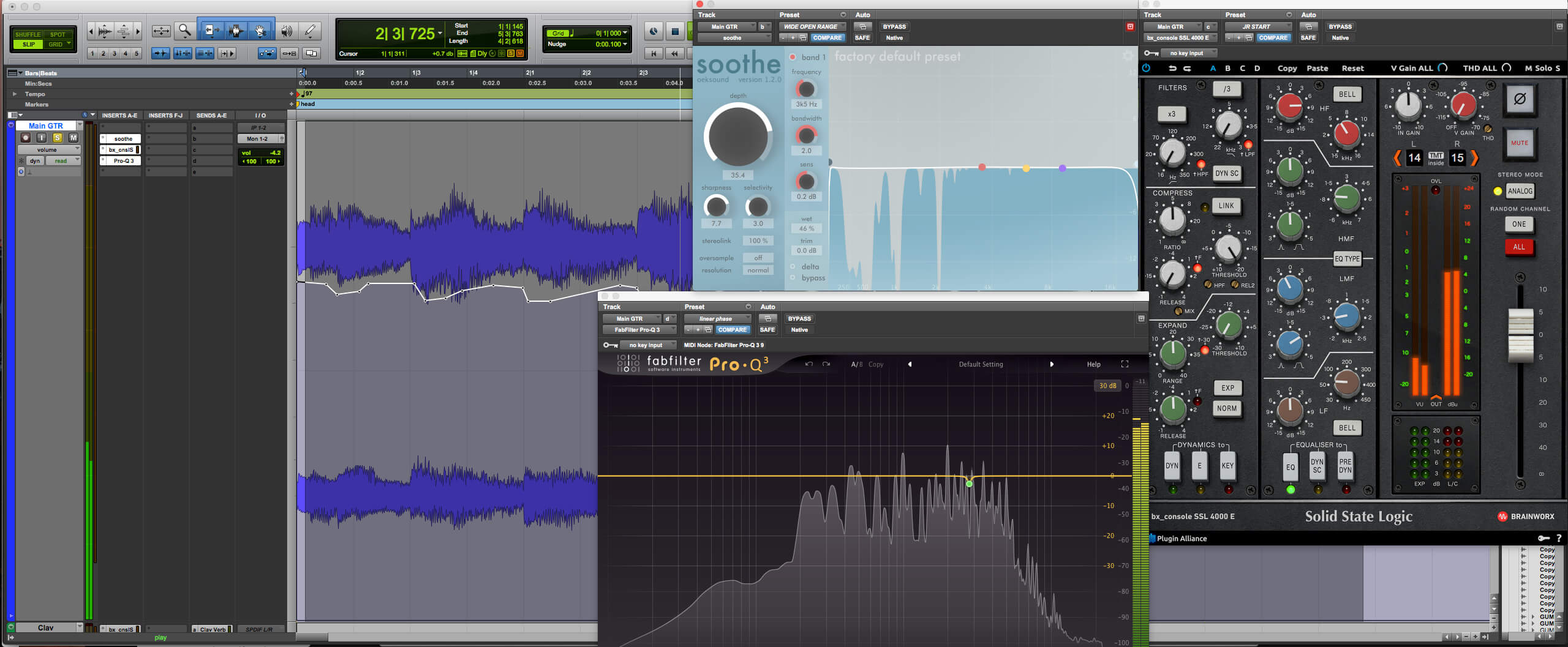
ACOUSTIC GUITAR: “In addition to a cut at 300hz, I had FabFilter Pro-Q 3 with a band at 5kHz automating down every transient, to cut out the harsh pick attack. This level of fast automation required the pencil tool; I zoomed in on the waveform and basically just drew in a dip wherever I saw a sharp transient, and wherever the transients would tame down allowing the waveforms to plateau, I would draw the EQ gain back in to increase in those spots.”
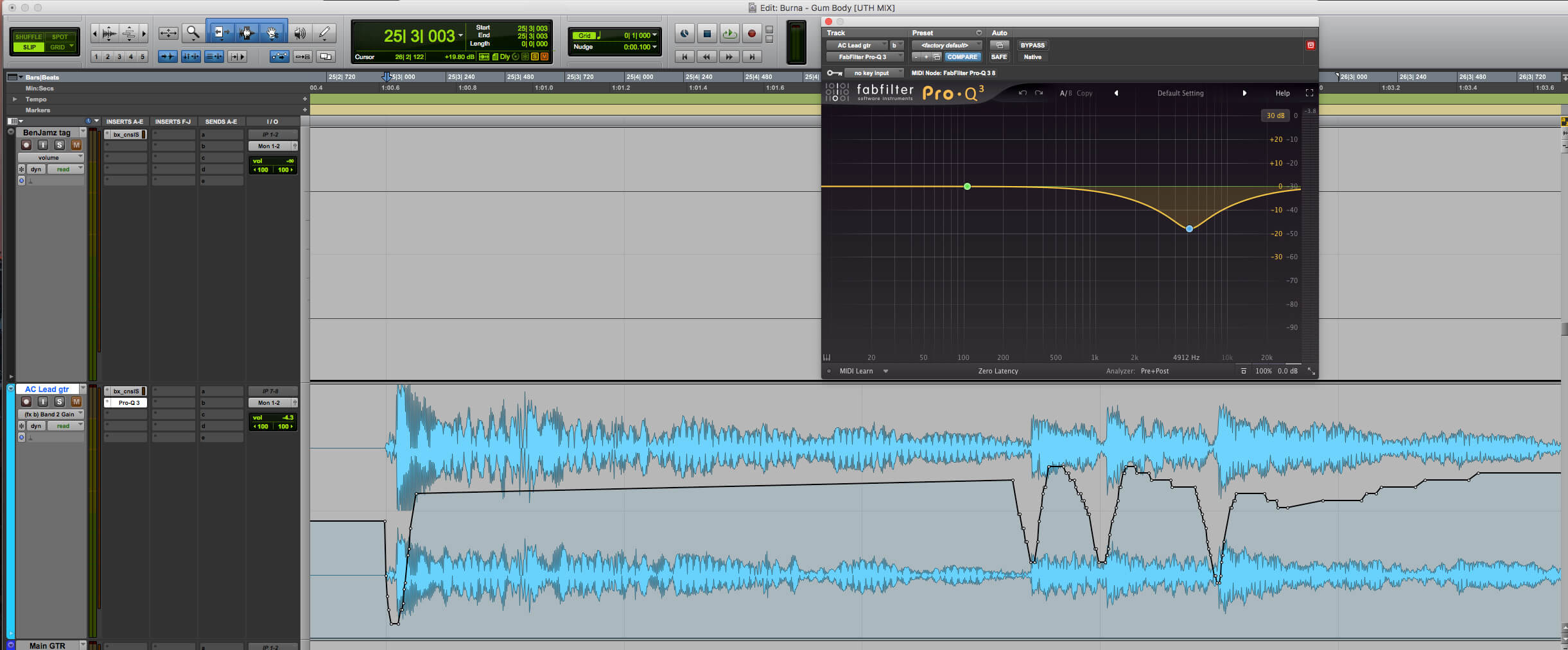
KEYS: Ernster is a big fan of motion created by B3s and Leslie cabinets in soul and R&B music from the 70s. “I feel the use of modern synth software has enabled a ‘set it and forget it’ mentality in production, so I attempt to combat that by imposing motion and movement into these tracks wherever I can. The keyboard part labelled Soul Chords had a bit of movement, but I set up some panning automation to add more movement so it moves from left to right.
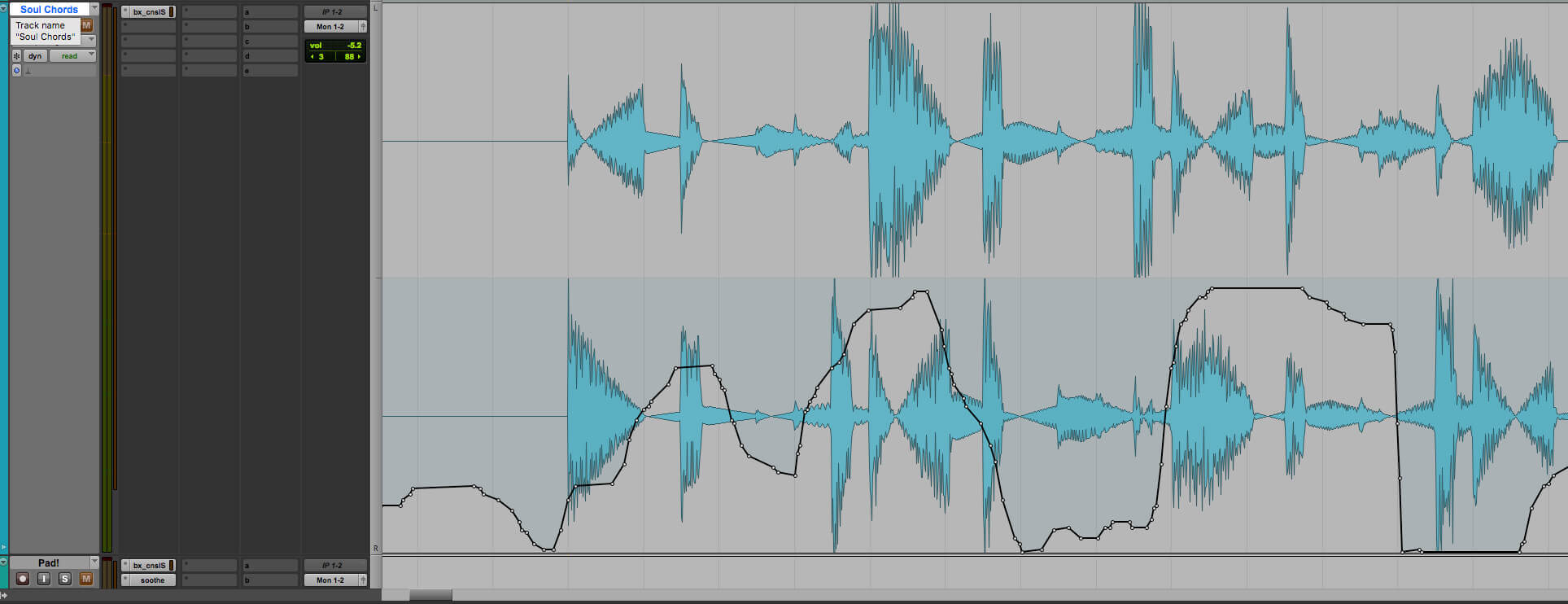
The end of the chain
MIX BUS: Mix stems were printed through Ernster’s mix bus chain before heading to Metropolis. It comprises an SSL X-Rack Bus Compressor, Kush Audio Clariphonic EQ. These feed a Waves TG1 plug-in with the width knob set to 3.00, followed by the Acustica Amber3 boosting 4db at 25khz, followed by the Crane Song Phoenix (set to Gold Luster at about 60% processing). Last in the chain was the Metric Halo Multiband Dynamics plug-in which he describes as “massaging the flex of the low end”.
That might sound a lot, but Ernster admits “the need for a conventional mix bus was minimal on the final mix sessions; it consisted of one Waves SSLComp set to 30ms attack, .01ms release, 4:1 ratio, and it was doing a maximum of 1-2db of gain reduction! All mixes went to mastering with no other plug-ins and no limiter.”

MASTERING: Veterans Mike Bozzi and Colin Leonard mastered this project. “We requested two copies of the masters: Loud, for personal use and referencing; and Quiet, for all streaming submissions,” notes Ernster.
“Streaming services recommend submitting mastered recordings at a lower level to play nicely with auto-levelling algorithms, often referred to as DSP’s”, Ernster informs. This means recordings keep headroom and maximum punch, and also that the songs won’t be further compressed and degraded. “Our quiet masters clocked in at about -14 LUFS, which is pretty healthy and translated beautifully to Spotify and Apple Music!”
Since its release, the album African Giant earned a #2 spot in the UK charts and a Grammy nomination. Meanwhile, fifth single Gum Body has so far earned 18.5M YouTube plays and over 22M Spotify streams.
For more interviews, click here.